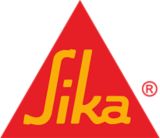
Sikaflex®-291
Multifunctional adhesive sealant for marine applications
Sikaflex®-291 is a non-sag 1-component polyurethane sealant specifically developed for the marine market, which cures on exposure to atmospheric moisture.
Sikaflex®-291 meets the requirements set out by the International Maritime Organisation (IMO).
- Bonds well to a wide variety of substrates
- Good ageing and weathering resistance
- Elastic
- Low odour
- Non-corrosive
- Can be over painted
- Can be sanded
Contact us
Complete the form below and one of our experienced sales and technical team members will get in touch.

